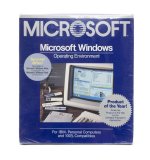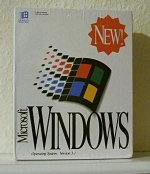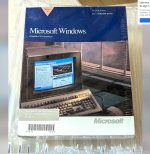Why am I dragging DRI into the conversation?
Because that's the thread topic... The thread is literally talking about the CP/M "hold" over OS choice - and so pointing out that DRI operating sysetms, and DOS related technologies they made were still entirely relevant until 1995. By which time, Gary Kildall was *very* wealthy. Which, if you go back to what I posted that sparked this controversy, is what I said!
Perhaps I phrased that a bit clumsily. Maybe I should have said something about why are you white-knighting for DRI so hard and pretending that the fact that, sure, DR-DOS was still technically on the market, meant the company was even remotely relevant in any conversation, now or at the time, about what the future of personal computer operating systems were going to be? I can still go down to the hardware store and buy a zinc washtub, but do I think that the company that stamps those out deserves serious consideration when considering what the future of laundry technology is going to be in the year 2025?
The OP's question (which was six months ago, I'm not sure why this popped back up) was simply "how long did CP/M 'rule' before MS-DOS became a thing", and, well, that's a really easy answer: it was born in 1974 and was friggin' *toast* by 1984, with a heyday that spanned roughly between 1977 and 1983. Sure, it shambled along as a zombie in various Pottsylvanian markets up to around 1990, but so did the Apple II and Commodore 64; nobody was pretending that those platforms held any promise as being the "next big thing" in computer or operating system technologies. You're the one who popped into this thread and started spouting this crazy notion that computers weren't "mainstream" until after the turn of the 20th Century and decided to pick 1995 as being some magic juncture in time where if things had gone just a little bit differently Novell (because DRI was *long dead* at this point) could have somehow become the future of computing with... what technology, exactly? Don't say DR-DOS, be serious.
Anyway. If I'm sounding a bit impatient it's because I feel like the fact you're so stuck on this absurd argument about what exactly we should call Windows 3.x ("shell", "operating environment", "operating system") is an argument that's being made either out of deep ignorance or very bad faith. Calling Windows the same thing as Norton Commander is either immensely stupid or a naked troll, I'm sorry... And again, i
t's entirely missing the point I was making about those stupid market share graphs. The thing I pointed out about that the 1995 graph is obscuring the fact that a huge percentage of the 80%+ market share that it was
calling DOS also included a
massive number of Windows users. Whether those people are running those Windows programs on a "shell", an "environment", an "operating system", or a friggin'
potato, the relevant takeaway is the reality that when the users of those "DOS" machines go shopping for a new computer it's going to be a consideration for them whether that new computer is going to be able to run their old software,
and that pile of software is going to include software that requires Windows.
The one lame response you had to that was the assertion that, hey, DR-DOS can run Windows. Which is so much missing the point it hurts.
Under Windows 3.11. You want to install a new drive, but it's not compatible with the BIOS, so you load drivers. You include the driver.sys file on config.sys, and maybe some other parts in autoexec.bat. These shim themselves into the OS - Does Windows recognize these drivers? These DOS drivers?
Okay, let's talk about this just a bit. Second part first: "Does Windows recognize these drivers? These DOS drivers?" The answer to this is, no, actually, it really doesn't. Have you ever actually used Windows 3.x? Windows uses its own built-in device drivers for essentially every part of the computer; video drivers, sound, printer, mouse,
none of these use any DOS driver directly. There is some gray area here, in that, for instance, you might have some devices that use a DOS driver to initialize the hardware and the Windows driver inherits the settings, but a Windows program using these devices isn't going to be making API calls to DOS, it's going to be using the Windows API, and in the vast majority of cases that thing is going to be diddling the bits on the hardware directly instead of making a Real Mode call to any resident code that was loaded in config.sys.
The one standout here would be filesystem drivers; Windows before 3.1 always uses the DOS API calls for file access and the actual low-level access to the hard disk, because doing otherwise would have required admitting that Windows was a full operating system(* I'll get back to this) and Microsoft would have to deal with getting drivers for every oddball EDSI and SCSI disk controller that someone might have lurking inside their computer. In some cases they possibly could have made real-mode calls to whatever int13h driver was included with cards that had option ROMs, but you're still taking that hit of having to F-around with a mode switch. (IBM had a solution to this with the PS/2; it was called
ABIOS, a native Protected Mode BIOS that offered a standardized multitaking-safe interface to hardware... that unfortunately did not exist on the vast majority of PC compatibles.)
But even this barrier was broken with Windows 3.11, which had optional native protected-mode drivers for accessing "standard" Western Digital-compatible MFM/RLL/IDE disk drives.
Let's be crystal clear about this: if you tick the 386 disk access box in Windows 3.11
you are running an exact equivalent of how Windows 95 operates; you're using a native Windows driver for everything i
ncluding disk access. On the flip side, if you boot Windows 9x into Safe Mode then you're running that so-called "Operating System" in exactly the same way as Windows 3.0 in 386 Enhanced mode runs, IE, protected mode native drivers for everything but the filesystem calls, which are being piped through the same DOS/BIOS calls as the older systems. Do you know what a
VxD is? That's the native 386 protected mode device driver API that's was available in Windows up through the end of Windows ME.
It was present in Windows/386 2.x.
Here's an old reference page talking about alternative VxD drivers to enable 386 Disk access on machines with disks bigger than the limit built into Microsoft's driver.
So I guess I can ask here: now that you know that ticking on that 32 bit disk access box pretty much puts DOS entirely to sleep, is it your position now that Windows 3.1 is
both "an operating system" and "not an operating system" depending on whether said box is ticked? Is that the hair you're looking for? This is entirely the same as how Windows 95 operates. So either Windows 3.1
is an operating system, or Windows 95
isn't. Pick your poison.
Such clear delineation is hard to ask for. Microsoft calling Windows 1/2/3 an OS in DOS age would be a political statement too. And they did not want to compete against their own product which was a market leader, rather supplement it.
This is a very important point that hasn't really been drilled into. When Microsoft started doing the technical research into converting Windows into a protected-mode operating system they were in fact violating a pile of agreements they'd made with IBM regarding the development commitments to OS/2, and if MS had actually called Windows 3.0 an "OS" instead of an "operating environment" or whatever other weasel words Bill Gates chose to use for it at the time in interviews it almost certainly would have triggered a contract lawsuit that IBM would have won in a heartbeat.
Microsoft was positively ruthless during this period. They had a contract with IBM that said "operating system" on it, so they didn't build one. Obviously it's somewhat more complicated than that, but in essence that's really what this dumb dance of words boils down to. The divorce was final by the time Windows 95 came out, so they could drop the pretense that what they'd built wasn't full-fledged OS.
This just isn't true. Not by any measure. It didn't launch until late AUGUST 1995 ! By 1995 has a clear and unambiguous meaning. It means 1 Jan 1995. I don't know how many PCs released with Windows 95 by 1st Jan 1996, but I would have no reason to believe that isn't true if you want to change the year you've claimed.
Uhm... it's interesting that you actually included in the quote for this response that
I'm very explicitly talking about that fact that WINDOWS, meaning Windows 3.x, was coming preinstalled on almost every new PC by 1995 and
had been for years at this point, not 95. Here's a typical ad from a January 1995 PC Magazine:
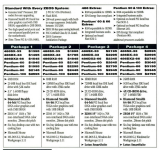
And here's January 1993:
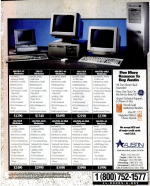
And, look: Windows again! Included on everything but the 286 all the way back in
January 1992:

You have to go back more than three years from 1995 before it starts getting easier to buy a PC
without Windows included than with it. THIS is what I was referring to.




